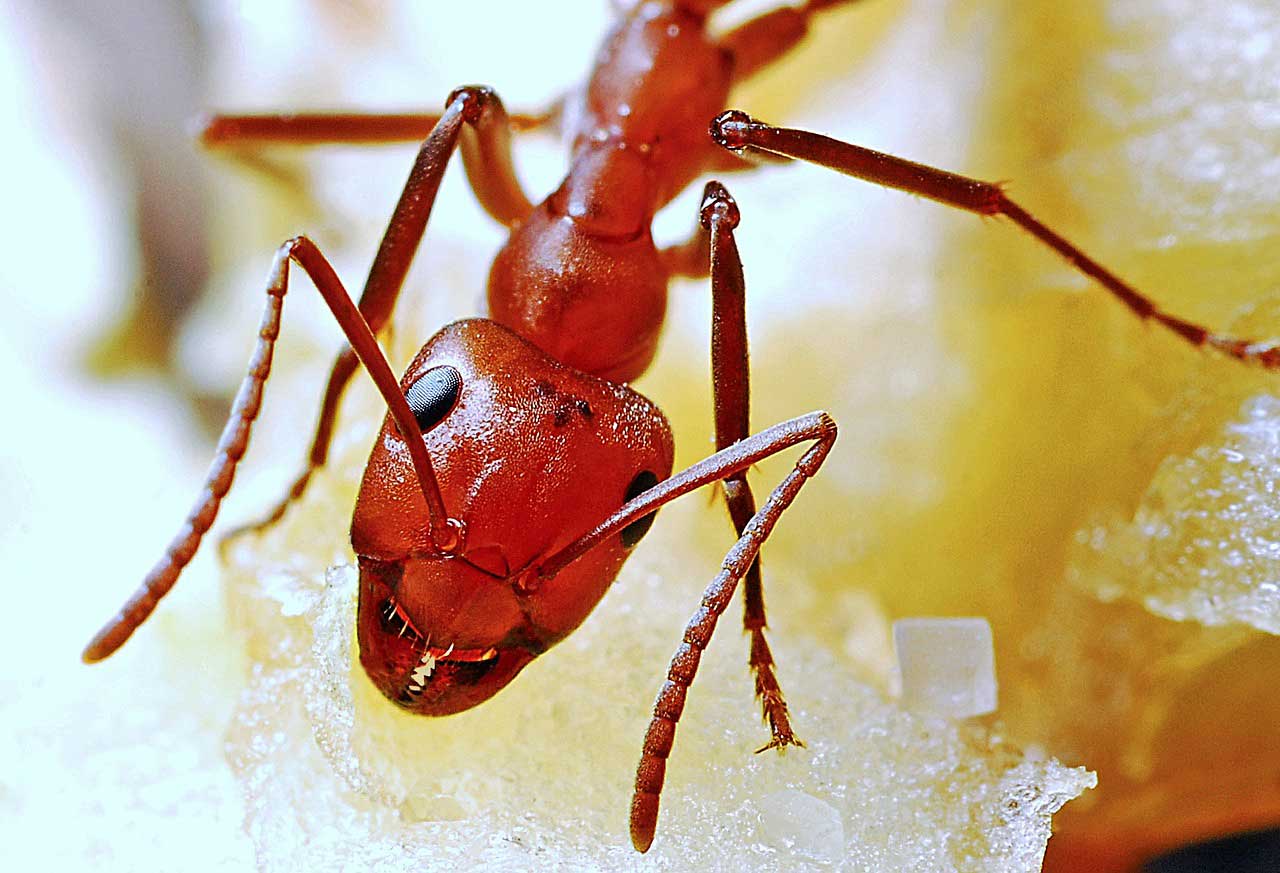
In an established nest these different sizes of ants are all present at the same time. The worker ants are blackish to reddish and their size varies from 2 to 6 mm (0.079 to 0.236 in). Fire ants of those species invasive in the United States can be distinguished from other ants locally present by their copper brown head and thorax with a darker abdomen. The bodies of mature fire ants, like the bodies of all typical mature insects, are divided into three sections: the head, the thorax, and the abdomen, with three pairs of legs and a pair of antennae. Appearance Fire ant mound Detail of the head ( Solenopsis geminata) Wasmannia auropunctata is another unrelated ant commonly called the "little fire ant" due to its potent sting. None of these names apply to all species of Solenopsis nor only to Solenopsis species for example the colloquial names for several species of weaver ants in the genus Oecophylla in Southeast Asia include "fire ants" because of their similar coloration and painful bites the two genera, however, are not closely related. Both Myrmica rubra and Pogonomyrmex barbatus are common examples of non-Solenopsis ants being termed red ants.

Many of the names shared by this genus are often used interchangeably to refer to other species of ant, such as the term red ant, mostly because of their similar coloration despite not being in the genus Solenopsis. Solenopsis are stinging ants, and most of their common names reflect this, for example, ginger ants and tropical fire ants. They live for only a few weeks and never help with the chores of the colony.Fire ants are several species of ants in the genus Solenopsis, which includes over 200 species.

Males have wings and fly to mate with queens. Workers are wingless and typically survive for several months. They do not reproduce, but perform other jobs, such as taking care of the brood, building and cleaning the nest, and gathering food. Workers are females that were fed less as larvae. A queen can live for decades under the right conditions. They are larger than workers and lay all the eggs in a colony – up to millions in some species! Queens initially have wings and fly to find a mate(s), but they tear them off before starting a new colony. Queens are females that were fed more as larvae. Did you know that ants, like all insects, are full-grown when they become adults? Their exoskeletons prevent them from getting any larger.įurthermore, adult ants belong to one of three castes: queen, worker, or male. The process of development from egg to adult can take from several weeks to months, depending on the species and the environment. Young adults are often lighter in color, but darken as they age.

The pupae of some species spin a cocoon for protection, while others remain uncovered, or naked.įinally, the pupa emerges as an adult. They start out whitish and gradually become darker. Pupae look more like adults, but their legs and antennae are folded against their bodies. This is a stage of rest and reorganization. When a larva is large enough, it metamorphoses into a pupa.

As a result, they grow rapidly, molting between sizes. Larvae are eating machines that rely on adults to provide a constant supply of food. Not all eggs are destined to become adults – some are eaten by nestmates for extra nourishment.Īn egg hatches into a worm-shaped larva with no eyes or legs. Ant eggs are soft, oval, and tiny – about the size of a period at the end of a sentence.


 0 kommentar(er)
0 kommentar(er)
